Introduction
In the vast culinary landscape, where dishes from every corner of the world compete for our taste buds’ attention, one humble yet profoundly satisfying meal stands out: pork trotter rice. This dish, often associated with street food culture in various Asian countries, combines the rich, gelatinous goodness of slow-cooked pork trotters with the comforting warmth of a steaming bowl of rice. It’s a meal that promises not just nourishment but an explosion of flavors and textures in every bite.
Making pork trotter rice that truly sings requires a blend of patience, precision, and an understanding of how ingredients interact. This guide aims to demystify the process, taking you through each step with meticulous detail, ensuring that even the most novice cook can achieve a restaurant-quality dish at home. From sourcing the best ingredients to perfecting the cooking technique, let’s embark on a culinary journey to create the most delicious pork trotter rice you’ve ever tasted.

Section 1: Ingredient Selection
The foundation of any great dish lies in its ingredients, and pork trotter rice is no exception. Here’s a breakdown of what you need and why:
1 Pork Trotters
- Quality Matters: Opt for fresh, organic pork trotters if possible. They should have a firm texture and a clean, fresh smell. Avoid trotters that appear discolored or have an unpleasant odor.
- Size Consideration: Larger trotters generally have more meat and collagen, but smaller ones can be more tender. Choose based on your preference for meatiness versus tenderness.
2 Rice
- Variety Selection: Short-grain rice, such as Japanese sushi rice or Korean jindalbi rice, is ideal. These varieties absorb flavors well and create a creamy, sticky texture that pairs perfectly with the pork trotters.
- Rinsing and Soaking: Rinse the rice thoroughly under cold running water until the water runs clear. Soak it in cold water for at least 30 minutes to an hour before cooking. This helps the grains absorb water evenly, resulting in fluffier rice.
3 Aromatics and Seasonings
- Ginger and Garlic: Fresh ginger and garlic add a layer of depth and warmth to the dish. Use them both in their raw form for sautéing and as slices or crushed pieces for the braising liquid.
- Scallions and Cilantro: These herbs provide a refreshing, slightly pungent contrast to the rich pork flavors. Chop them finely for garnishing.
- Soy Sauce, Oyster Sauce, and Fish Sauce: These condiments form the backbone of the braising liquid, contributing savory, umami-rich notes. Use high-quality versions to elevate the dish.
- Sugar and Rice Vinegar: A touch of sugar balances out the savory flavors, while rice vinegar adds a hint of tanginess.
- Star Anise, Cinnamon, and Cloves: Whole spices like these add complexity without overpowering the dish. Use them sparingly in a spice sachet to avoid biting into them during eating.
4 Broth
- Chicken or Pork Broth: A homemade broth made from bones and aromatics will add an unparalleled depth of flavor. If time is a constraint, use a high-quality store-bought broth as a substitute.
Section 2: Preparation Techniques
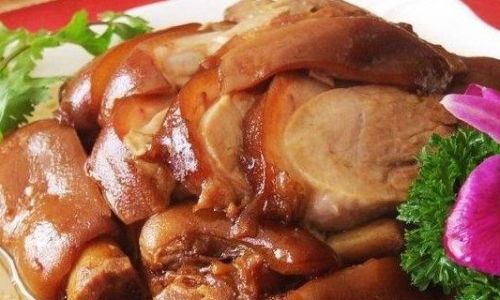
With the ingredients in place, it’s time to dive into the preparation. Each step is crucial in building the final flavor profile of your pork trotter rice.
1 Cleaning and Preparing the Trotters
- Trimming: Use a sharp knife to remove any excess hair, skin, or fat from the trotters. This not only improves the appearance but also ensures a cleaner taste.
- Scoring: Make shallow cuts across the surface of the trotters. This helps the marinade penetrate deeper, enhancing flavor.
2 Marinating the Trotters
- Marinade Mixture: In a bowl, combine soy sauce, rice vinegar, sugar, minced garlic, and grated ginger. Add the trotters, ensuring they are fully submerged. Let them marinate in the refrigerator for at least 2 hours, preferably overnight, for maximum flavor absorption.
3 Preparing the Aromatics and Spices
- Chop and Slice: Prepare your ginger, garlic, scallions, and cilantro. Tie the whole spices (star anise, cinnamon, cloves) in a cheesecloth or spice bag to make them easy to remove later.
4 Cooking the Rice
- Draining and Cooking: Drain the soaked rice well. In a pot with a tight-fitting lid, combine the rice with an equal volume of broth (or water, if using) and a pinch of salt. Bring to a boil, then reduce to a simmer, cover, and cook for about 15-20 minutes, or until the liquid is absorbed and the rice is tender.
Section 3: Braising the Trotters
Braising is the key to tender, flavorful pork trotters. This slow-cooking method allows the meat to break down and the collagen to melt, creating a rich, gelatinous texture.
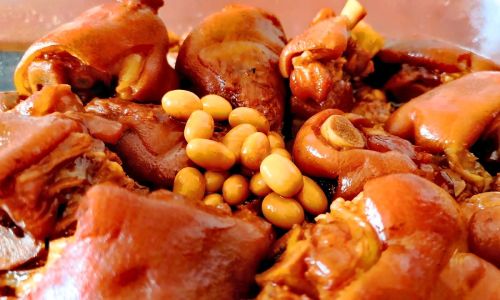
1 Sautéing the Aromatics
- Heating Oil: In a heavy-bottomed pot or Dutch oven, heat a generous amount of oil over medium-high heat. Add sliced ginger, garlic, and scallions. Sauté until fragrant and slightly browned.
2 Adding the Trotters
- Browning: Remove the trotters from the marinade (reserving the marinade), and pat them dry. Sear them in the pot until golden brown on all sides. This locks in juices and adds a layer of caramelized flavor.
3 Creating the Braising Liquid
- Combining Ingredients: Pour the reserved marinade into the pot, along with additional broth to cover the trotters halfway. Add the spice sachet, oyster sauce, fish sauce, and a bit more soy sauce if needed. Bring to a simmer.
4 Simmering
- Slow Cooking: Reduce the heat to low, cover, and let the trotters simmer gently for at least 2-3 hours, or until the meat is very tender and almost falling off the bone. Check occasionally, adding more broth if necessary to keep the trotters submerged.
Section 4: Assembling the Dish
With the rice cooked and the trotters braised to perfection, it’s time to plate your masterpiece.
1 Serving the Rice
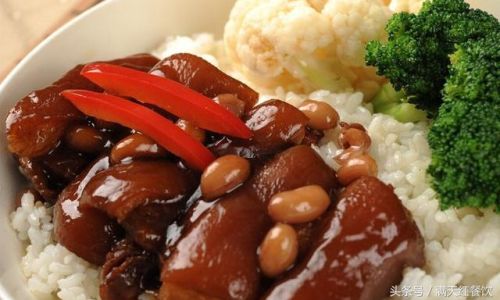
- Fluffing: Use a fork to gently fluff the cooked rice, releasing any steam and preventing it from becoming mushy.
2 Plating
- Presentation: On each serving plate, spoon a generous amount of rice. Place a braised trotter on top, making sure to include some of the braising liquid for added flavor. Garnish with chopped scallions, cilantro, and a drizzle of extra soy sauce if desired.
3 Finishing Touches
- Extra Flavor: Serve with condiments like chili sauce, pickled vegetables, or a squeeze of lime for those who prefer a bit of extra tang or heat.
Conclusion
Making delicious pork trotter rice is an art that combines culinary science, patience, and a love for food. By carefully selecting your ingredients, meticulously preparing each component, and understanding the nuances of braising and rice cooking, you can transform simple pork trotters and rice into a meal that is both comforting and extraordinary.
Remember, the beauty of this dish lies in its simplicity and adaptability. Feel free to experiment with different spices, herbs, or even cooking methods to suit your taste preferences. Whether you’re serving it as a hearty family meal or impressing guests at a dinner party, pork trotter rice has the power to delight and satisfy even the most discerning palate.
So, gather your ingredients, roll up your sleeves, and embark on this culinary adventure. With each bite of your homemade pork trotter rice, you’ll be rewarded with a burst of flavors that remind us why this humble dish has earned its place in the hearts and stomachs of so many. Happy cooking!
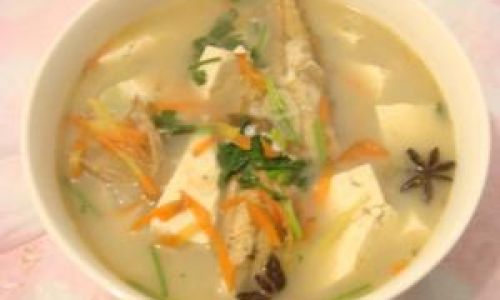
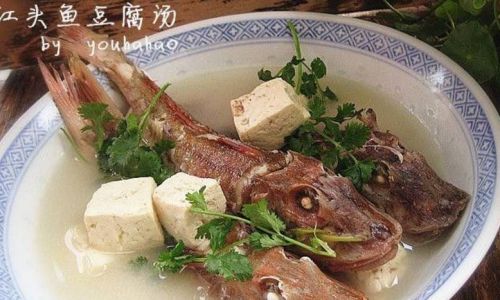
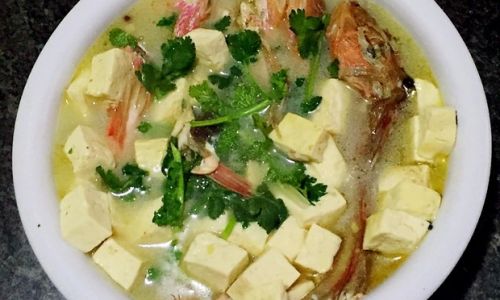
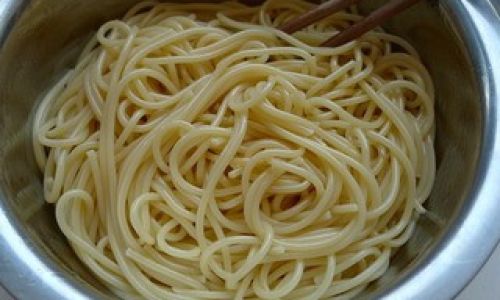
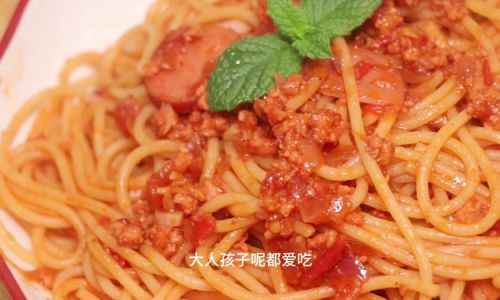
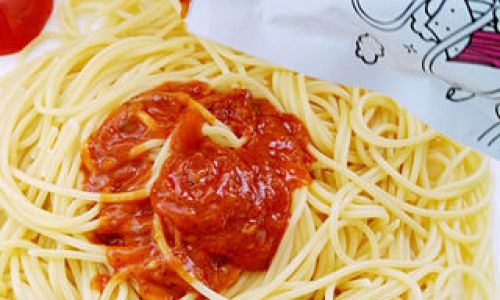
0 comments